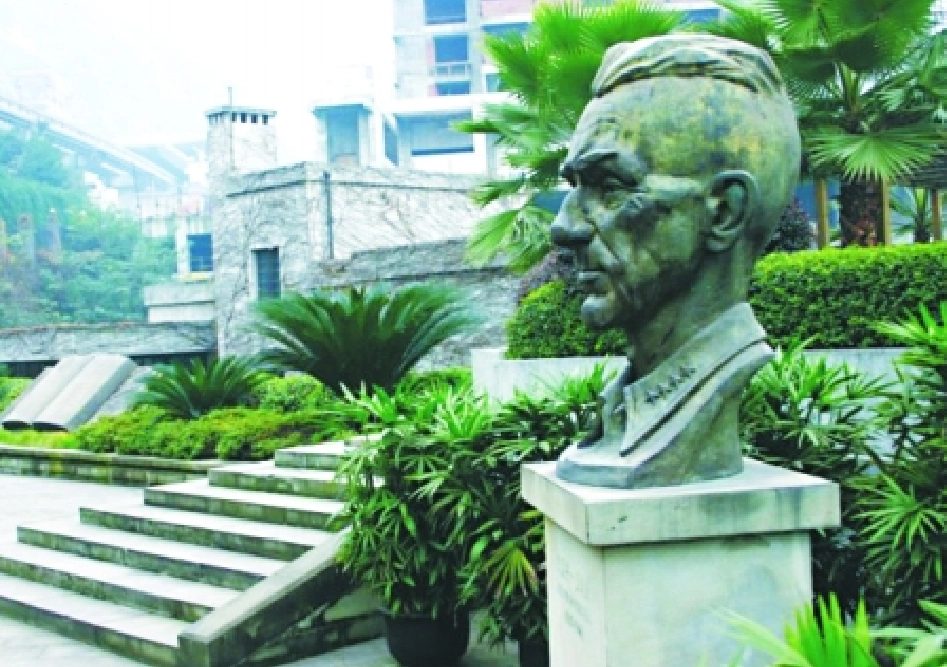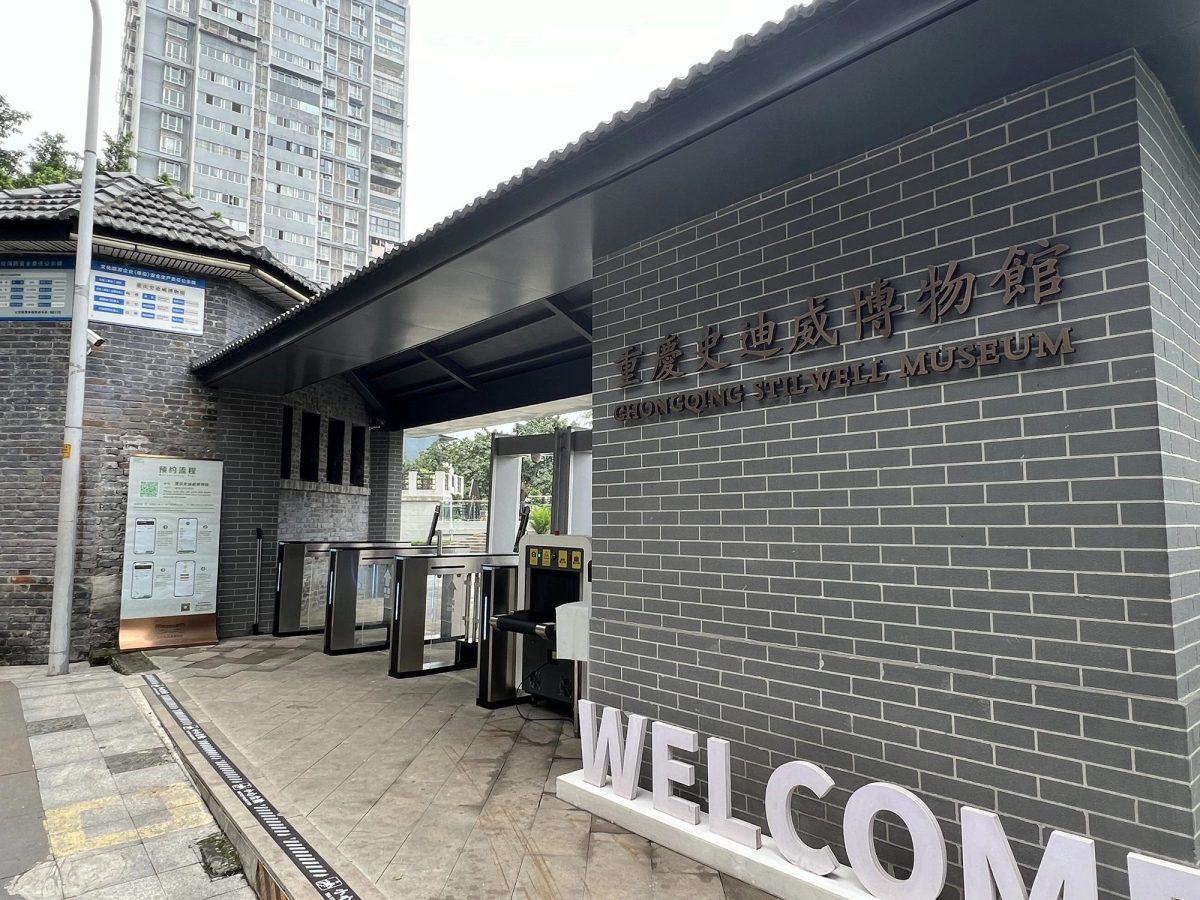Located at No. 63, Jialing New Road, Yuzhong District, Chongqing, the Chongqing Stilwell Museum chronicles the history of friendship and common battles between the Chinese and American people.
Covering an area of more than 5,000 square meters and a building area of more than 4,000 square meters, the museum is a social science museum dedicated to the stories of famous figures.
As early as 1994, “General Stilwell’s Former Residence Exhibition Hall” opened its doors to the public. Five main sections are displayed here, including “Stilwell in China”, “Flying Tiger Air Force”, “Flight of the Hump”, “Merrill’s Raiders” and “U.S. Army Observation Group in Yan’an”.
Until 2019, the museum has a total of 20 pieces/sets of valuable exhibits, such as General Stilwell’s uniforms, collar badges and helmets.
In November 2000, the museum was officially renamed as “Chongqing Stilwell Museum”, and in 2003, the museum also restored and restored General Stilwell’s former residence.

When you step into the door of the museum, the first thing that comes into your eyes is a stone tablet like turning the pages of a book, which is engraved with a letter written by President Franklin D. Roosevelt to the people of Chongqing in 1944, both in English and Chinese, and the Chinese part of the letter reads:
“On behalf of the people of the United States of America, I write to pay tribute to the heroic people of Chungking. You have faced many brutal air raids before the people of the world were fully aware of the horrors of air raids, but the fortitude, composure, and gallantry you have shown are glorious proof that the will of a people determined to fight for their freedom will never be broken by violent terror. Your loyalty to the cause of freedom will forever inspire future generations.”
To the right of the main gate, the house entrance is decorated with a sign that reads “Former Residence of General Joseph Stilwell, Commander-in-Chief of the U.S. Forces in the China-India-Burma Theater” and “Residence of the Chief of Staff of the Allied China Theater Command”. Inside the house, there is a simple and plain display of General Stilwell’s daily necessities when he was in China, as well as some photos of his life at that time.
Outside the museum there is a wall of “Everlasting Friendship”, which introduces through pictures and words the visits to the Stilwell Museum and commemorative activities by high-level leaders of China and the United States, as well as by private citizens over the years.
Walking into the main hall of the museum, “Great Friend – General Stilwell’s Life Photo Exhibition” is written on the wall. Each room displays in detail the life of General Stilwell, from his birth to his death, including his upbringing, his deep connection with China, his five visits to China, and his great contributions to China’s resistance during World War II, such as presiding over the training of the Chinese army in China-Burma-India, opening up the Hump Route, constructing the Stilwell Highway, and actively promoting the stationing of the U.S. Army Observer Group in Yan’an.
The concluding section reads:
“General Stilwell has been gone for nearly eighty years. Eighty years ago, he fought side by side with the Chinese people for the cause of peace and justice for mankind. Over the past eight decades, the people of China and the United States have jointly honored his memory through various activities, remembering the important contributions he made to the common cause of the two countries. Looking ahead, we should learn from history, uphold the common values of all mankind of peace, development, fairness, justice, democracy and freedom, promote the building of a new type of international relations, build a community of human destiny, and work together to create a better future for the world.”
General Stilwell was not only an outstanding military man, but also a man of many talents. He spoke fluent Mandarin, excelled in painting and calligraphy, and was a member of the varsity football team that won a national championship.
Opposite is the Flying Tigers Pavilion, which also combines illustrations and texts to show the outstanding contributions made by General Chennault and the Flying Tigers under his leadership to the war effort.
Regarding the Hump Route and the SDU, Shen Ning described it this way in his article “Building the Yunnan-Burma Road”:
“The Hump Route is the longest, most arduous and costly airlift operation in the history of world war airlift. The route was 500 miles long, with an altitude between 4,500 and 5,500 meters, with the highest point reaching 7,000 meters. For an airplane of the 1940s, the flight was exceptionally difficult. Moreover, the route was through high mountains, snowy peaks, canyons and glaciers, tropical jungles and frigid forests, and the climate was harsh, with strong air currents, extremely low barometric pressure, and hail and frost, which made it possible for the planes to crash or hit the mountains at any time. What’s more, they also had to fly over the Japanese occupied areas, which was very dangerous.
Within three years, Chinese airlines flew 80,000 sorties, and the U.S. Army put in 2,100 planes, transporting 850,000 tons of strategic materials. More than 84,000 people from China and the United States were involved, including more than 33,400 combatants. On this great route, the U.S. Army lost more than 1,500 airplanes and sacrificed more than 3,000 pilots. China Airlines, which had 100 transport planes, lost 48 planes and sacrificed more than 160 pilots on the Hump Route.”
The Flying Tigers Memorial’s conclusion reads:
“The Flying Tigers and the U.S. Air Force for China made outstanding contributions to the Chinese People’s War of Resistance Against Japanese Aggression and the World Anti-Fascist War. Recalling the past, the Chinese and American people shared the same enemy, endured the test of blood and fire, and formed a deep friendship. Looking to the future, China and the United States should learn from history, inherit friendship, and promote the healthy and stable development of China-US relations.”
Seeing General Stilwell in his sixties, leading the troops forward in the mud;
See Flying Tigers members behind each person is attached to a piece of cloth, that is the then National Government Aviation Committee prepared to mobilize the people along the rescue of crashed pilots, written on it “to China to help the war in the foreigners (U.S.), military and civilian one rescue”;
I read about the Merrill Raider Commandos, the only U.S. ground combat unit in the China-Burma-India war zone: “In the harsh environment of the Burmese jungle, the commandos endured high temperatures, heat, fatigue, and disease, and were born to die. In the Battle of Myitkyina, the key battle of the counter-offensive in northern Burma, the commandos successfully occupied the important Myitkyina airfield, so that the reinforcements and heavy weapons of the Indian Army were transported in time to the forward positions, and played a vital role in the final victory of the counter-offensive in northern Burma.”
And even just a few of the generals’ birth and death years, Joseph Warren Stilwell (1883-1946), Claire Lee Chennault (1893-1958) ……
There are not many people visiting the museum, but everyone looks at it very carefully and it is very quiet, not a sound.
At the main entrance, there was a guestbook, and I saw a little child writing a message under the guidance of his mother, which read, “Peace, make this world more beautiful and rich.”
There were also messages from other people: “The pursuit of peace, democracy, fairness and justice is a common goal of mankind, may the friendship between China and the United States last forever!”
